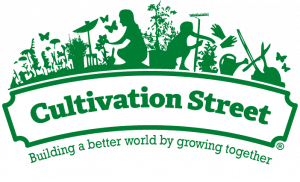How to sow and grow nasturtiums UK
Although it might not be the easiest plant to include in phonics lessons, Nasturtiums are another brilliant flower for getting younger members of schools and communities growing flowers.
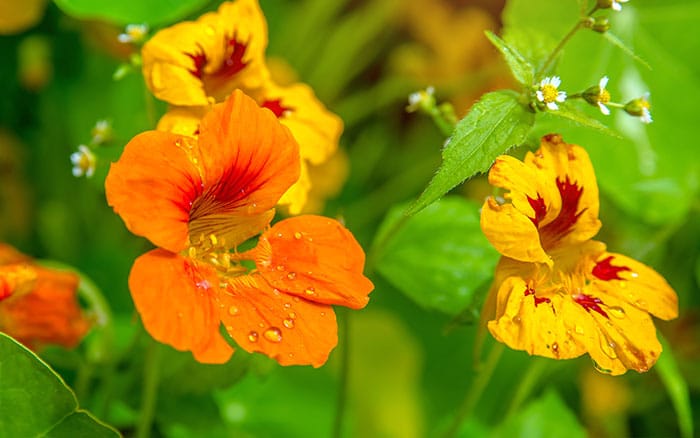
Fascinating facts about Nasturtiums...
-
They’re edible!
These flowers are often used to enhance the look and flavour of salads with the peppery taste of their gorgeous leaves. In fact, during World War Two, these blooms were used as a pepper substitute!
-
They're great companion plants...
These flowers attract lots of insects, including aphids. This means they’ll draw pests away from other crops, like Brassicas and Beans. They might just save your lunch!
-
They're symbolic.
Nasturtiums are symbolic of love, loyalty, strength, and purity. These are great traits to champion within schools and communities.
How do you grow Nasturtiums?
1. Choose the right spot.
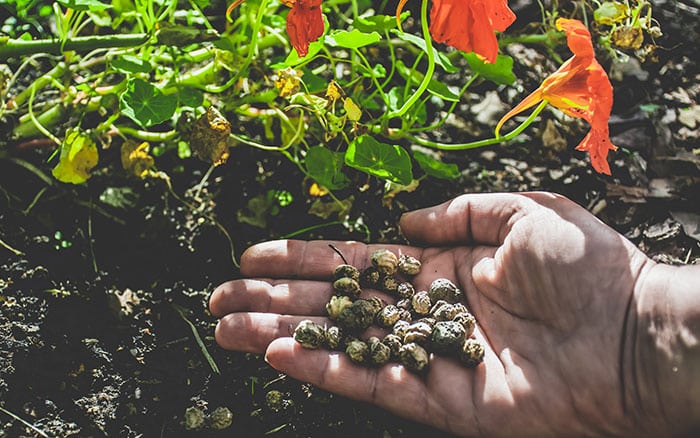
Nasturtiums are pretty fuss-free. They only need sunshine for around half of the day to grow well. Make sure you choose a spot with free-draining, poor soil, so the flowers can outgrow the foliage.
Although they’re considered an ‘invasive species’ in places like California, their ability to grow around their environment is great for us. We can grow them in borders, un an obelisk, in raised beds or pots. The choice is yours!
2. Ready, set, sow!
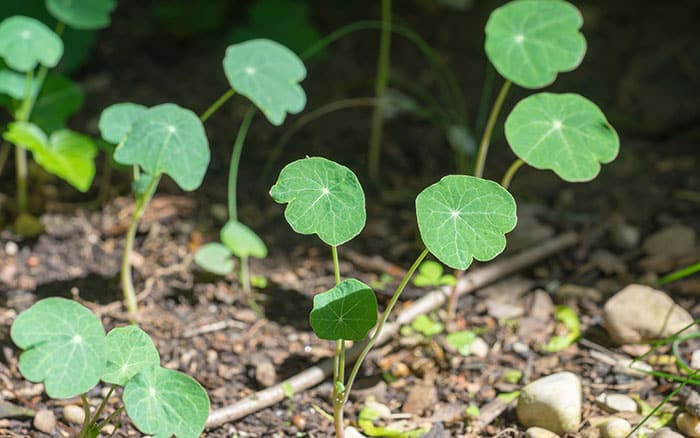
You can sow your seeds between March and May. Sowing in March means the seeds will need to be undercover, in case of frosts, and sowing in May means your nasturtiums will flower until the first autumn frost. You can sow them directly where you’d like them to flower.
Rake the soil until you have a fine tilth, and make sure to get rid of any weeds. Give the patch a good watering before sowing. This will ensure the seeds don’t get washed away once sown. Next, sow the seeds around 1.5cm deep, and around 10cm apart and recover with soil. You should see seedlings emerge after about 2 weeks. Where needed, thin them to around 30cm apart.
3. They grow up so fast!
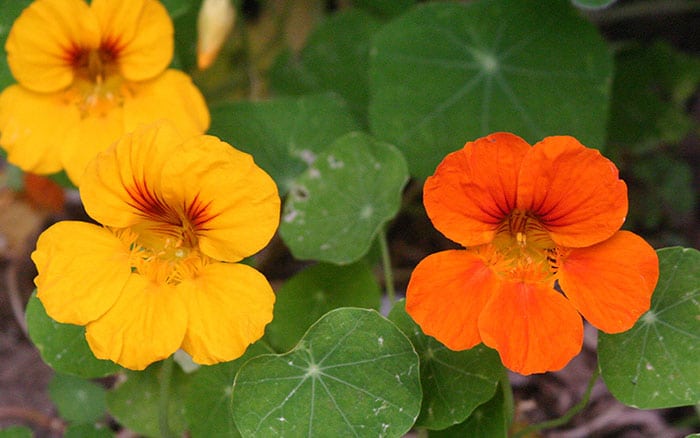
Nasturtiums are super easy to look after and require little maintenance. Especially if you’re growing the ground, rather than a container. If you are growing in a container, water to keep the compost evenly moist. Plus, deadheading will encourage more blooms over a longer period.
As mentioned, these flowers are great companion plants. This means they attract pests away from other plants to themselves. If you’re wanting to keep the pests away from this bloom, the kindest pest removal method is picking the eggs and caterpillars off and placing them onto a plant you don’t mind being nibbled at.
4. Harvest time.

The leaves, flowers, and seeds are all edible. Because of their peppery taste, the flowers and young leaves make a great addition to a salad, alongside some tasty lettuce. They have a similar taste to watercress, as they’re closely related.
The seed pods are actually known as ‘the poor man’s capers’ and make a great caper substitute. Make sure you pick them whilst mature but still green, and pickle them in vinegar. This could be another great thing to sell if you’re fundraising for your garden!
And there you have it! Another brilliant bloom to grow with your school or community. Whether you’re wanting to add a bit of pepper to your salad, or beauty to your borders, Nasturtiums are a great flower to add to your school or community garden, today.
